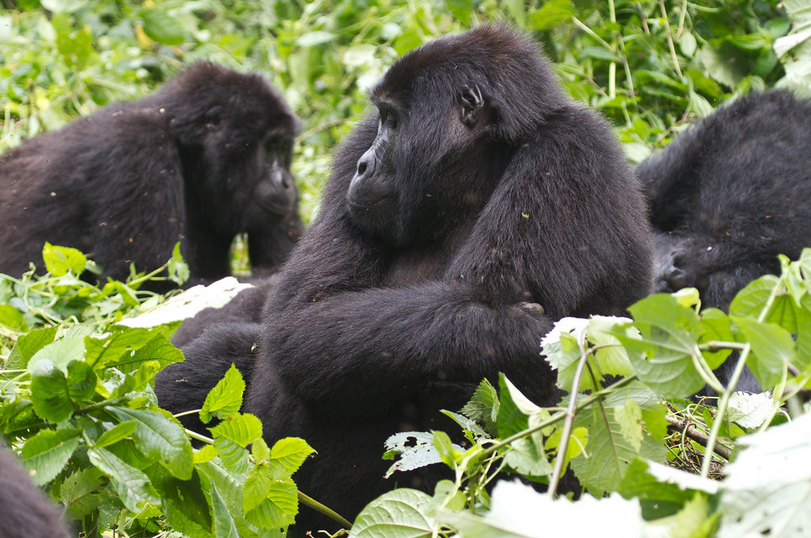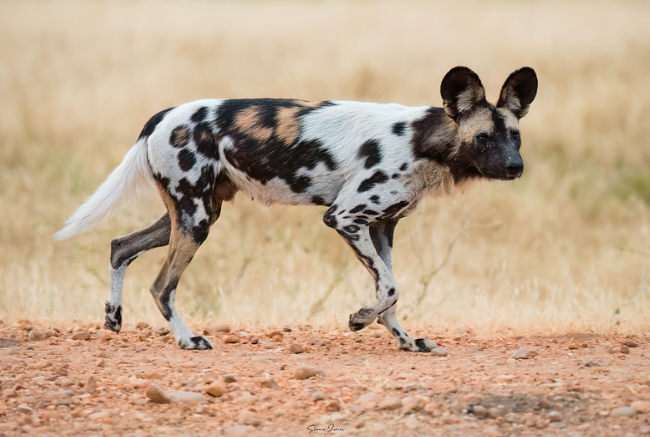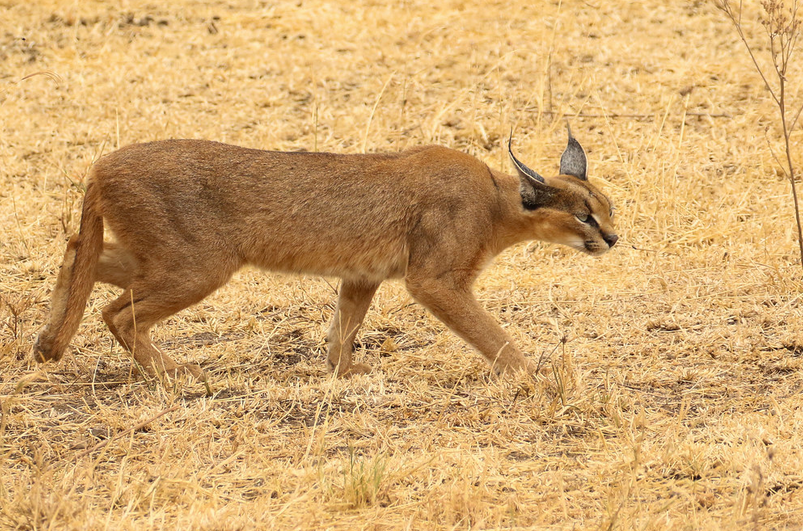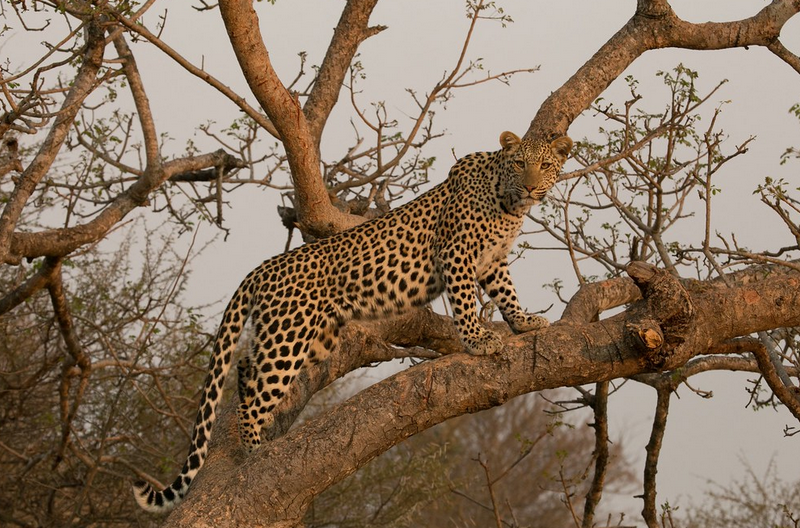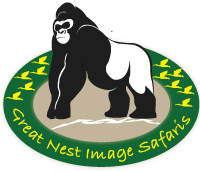The Bagisu Culture
“The Bamasaba people of Mt. Elgon”
Overview:
The Bagisu Culture: call them the Gisu people are a Bantu tribe of the Masaba people of eastern Uganda and are closely related to the Bakusu people of Kenya. They inhabit the eastern Uganda districts of Sironko, Manafwa, Bududa, Bulambuli and Mbale in the western and southern halves of Mount Elgon. Their land is south cracked and is made up of jumble hills wedged against the high escarpment such as the crushed table cloth. The escarpment perishes gradually to form sweeping plains spreading in the north east which is a resident to the Iteso tribes. The Bagisu people are famously known for their circumcision traditional rituals which are known as Imbalu and these rituals are performed every two years in the month of August.
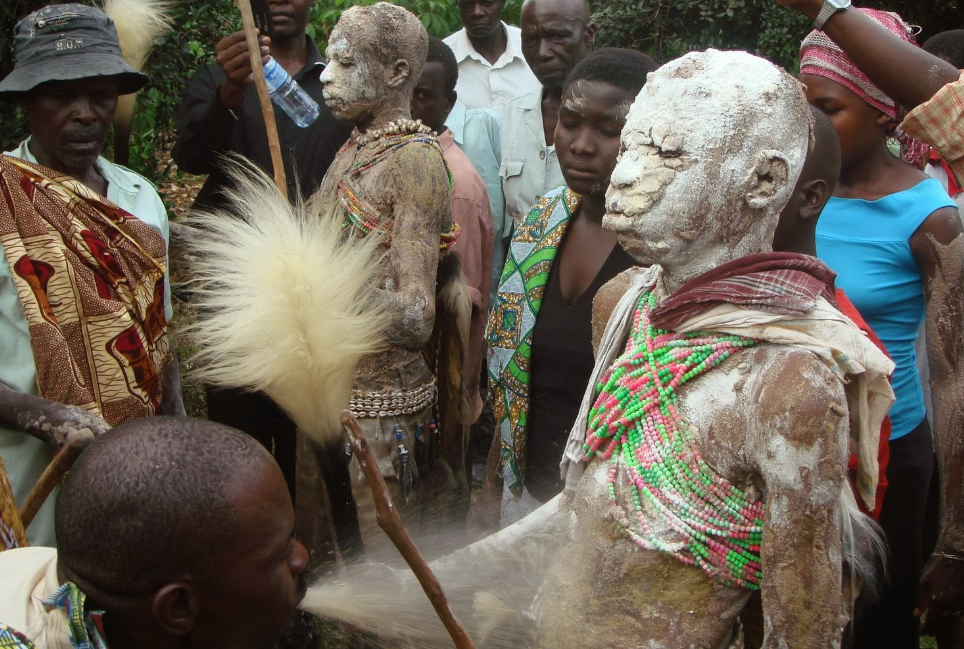
The Bagisu Culture
What to see and enjoy
Language
The Gisu speak a language known as Lumasaba which is also called Lugisu that belongs to Niger-Congo language family. Just like other Bantu languages, Lugisu has multiple dialects; Ludadiri spoken by the Bagisu from the North and Lubuuya spoken in South Bugisu. Furthermore, the Bagisu who live near the Babukusu of western Kenya have the influence of Lubukusu, the language of Babukusu and yet, the Bagisu who live in central Bugisu speak a Lugisu dialect influenced by languages which include; Lusoga, Luganda, Lunyoli and Lusamia not to mention but a few.
The circumcision ceremony
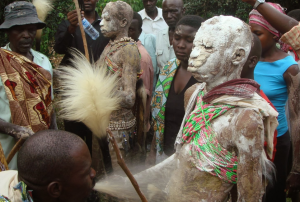
The Bamasaba/Bagisu are a highly superstitious tribe who have a unique male initiation culture called the Imbalu which is believed to initiate boys (Musinde) into men (Mutsetsa). This culture of circumcision was adopted by the Bamasaba from their in-laws (the Maasai people). These ceremonies among the Bagisu are held every two years during the month of August. Before circumcision, the eligible male candidates aged 16-25 years of age are given a certain herb which is known as the “ityanyi” for arousal. The herb is either tied on the candidate’s toe or placed on the ground where he jumps over it without knowing. Any male that absconds is hunted down and forcefully circumcised. These boys are smeared with flour and paint from malwa-yeast which is followed by dancing and singing the Kadodi by women in the community where they are accompanied by girls and other relatives to celebrate the pre-stage of being initiated into manhood. The dancing takes place for three days and the circumcision is done fast and openly. The boys show strength by standing strong while the outer skin of their penis is stripped off with knives that are to be used only for these occasions.
Political Set-up
These people had a loose political structure based on clans; each and every clan had an elder known as the chief of the clan (Umwami we Sikoka). These men were chosen on the basis of age and wealth and this is because they were responsible for maintaining law and order, unity and the continuity of the clan. These men were also responsible for keeping and maintaining the cultural values of the clans and for making sacrifices to the ancestral spirits. Often, stronger chiefs would extend their influence to other clans into one single political entity.
Birth
In the course of pregnancy, women did not have to follow food taboos while men must be most careful to not fall while walking or climbing as this was thought to cause a miscarriage. After child birth, the placenta was carefully buried behind the house. Beer was then poured where the child was born from and two trees (mwima and mbaga) were planted in front of the house. For fifteen days after child birth, the wife remained in seclusion after which she shaved the hair on her head and body and also swept the floor of the house.
Death
Whenever somebody died, the body remained in the home until the relatives of the deceased arrived. At sunset, the body was dumped at the nearest waste ground and as the night fell, horns were blown and the children were told that jackals were coming to eat the dead. During the night hours, the elderly women that were related to the deceased went back to the body and cut off pieces for mourning. Over the next three days, the relatives of the deceased mourned in the house as they ate the flesh of the dead.
After the circumcision
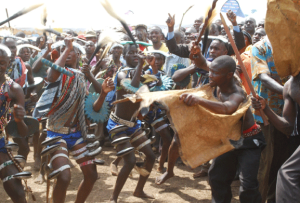
After the ceremony of circumcision, the candidate is taken to his father’s place, wrapped in a piece of cloth and made to sit down on a stool. He is made to walk around the house a couple of times for three days and in the course of these days, he is not allowed to eat using his hands since he is not yet a man but he’s to be fed by his family members. After the completion of these three days, the circumciser is called upon to wash the hands of the candidate before he starts eating and here makes the completion of the initiated into manhood. After the rituals then the initiated man is allowed to marry and he is taught the duties of manhood which include agriculture as an important activity and he is also emphasized to behave as a man always. However, according to their traditional beliefs, healing of the wound will depend on how many goats were slaughtered during circumcision. After healing, the Inemba ritual is performed where all initiates in the community are expected to attend. Community members are also allowed to attend and celebrate the journey of transforming into a man by the successful candidate.
Inheritance
Traditionally, the eldest son inherits his father’s property though this is not guaranteed nevertheless as the clan can intervene and deprive the son of his privilege. If the son inherits the property, it is his responsibility to provide for his siblings until marriage. The elderly son not only takles his father’s property, he may also take his late father’s widows as wives.
Marriage
According to history, the girls around the age of 12 years began the process of scarring their faces and would cut the skin of their foreheads and rub ash into the wounds. Girls carry out this activity because it states that women would never be allowed to marry if they had not gone through this and traditionally, this was a sign of clan membership and no boy would be allowed to marry from his own clan as this was considered an abomination.
Economic activities
The Bagisu mainly practice farming as a way of life; they mainly fed on Malewa a delicacy made from bamboo shoots that grows at the top of Mount Elgon. They also grow bananas primarily for food and sell them to supplement the income earned from cotton, coffee and tobacco. They also grow other food crops such as beans, millet, sorghum, maize, yams and cassava for subsistence. These people are the main producers of Arabica coffee which is one of the major exports of Uganda. The Bagisu went on and formed a farmer’s union called “The Bagisu Cooperative Union” that helps in price stabilization of the coffee. In addition to farming, tourism is another activity carried out in Bugisu land which provides employment opportunities to the locals both directly and indirectly. These tourism activities include; hiking to the Wagagai peak at the top of Mount Elgon which is the “world’s largest mountain caldera”, wildlife viewing in Mount Elgon National Park, Arabic coffee making experience and the famous Imbalu among others.
History
The Gisu are believed to have originated from the hole of Mount Elgon and they assert that their ancestors were called Mundu and Sera whom tradition says came out of a hole in Mount Masaba which is famously known as Elgon. Their early life seems to have been anti-social almost based on the principle which states “survival of the fittest”. Their history is not so known but they are known to be related to the sub-group of the Luhya of Kenya known as the Bukusu. They are believed to have separated from the Bukusu back in the 19th century though the tradition claiming that they have always lived where they are throughout history is not at all fashionable. The earliest immigrants into Bugisu area are believed to have moved into the Mount Elgon areas during the 16th century from the eastern plains. Their earliest home is said to have been in the Usain Gishu Plateau of Kenya which seems to have been an end product of the mixing of people of different cultures and origins but they were all Bantu speaking people.
Origin of the name Bagisu
Maswahaba’s first son with Nabarwa was Mwambu who was nicknamed “Nkisu” by his Maasai uncles who had stolen his father’s cows from him. Mwasahaba failed to pronounce the nickname of Nkisu which means a bull in the Maasai language and pronounced it as Mugisu hence the pronoun Bagisu referring to these people today.
Ancestors
The Masaba, Bukusu and Luhya people believed that their ancestors were Mundu and Sera. Maswahaba (ancestor of the Bamasaba) migrated from the Ethiopian Mountains traveling via Lake Turkana to Sironko and settled around Bududa where he fell in love with a Maasai girl who was known as Nabarwa. The girl’s family demanded that in order for Maswahaba to marry their daughter, he had to undergo their rite of circumcision of which he agreed to do so.
Below are some of our tours to different destinations in the Country
1 Day Chimpanzee Ngamba Island Tour
1 Day Source of the Nile Jinja
2 Days Murchison falls national park
3 Days Lake Mburo national park safari
3 Days Murchison falls national park
3 Days Queen Elizabeth national park
4 Days Kidepo savannah wildlife safari
5 Days Queen & Bwindi Adventure safari
6 Days Uganda wildlife & primate safari
7 Days Uganda Adventure Safari
8 Days Gorilla & Wildlife safari
10 Days Gorilla & Adventure safari
Request a Quote
Featured Tour Updates
Permit cost for gorilla trekking in Uganda
Permit cost for gorilla trekking in Uganda Permit cost for gorilla trekking in Uganda : Gorilla trekking is one...
The African Wild Dog
The African Wild Dog The African wild dog: (Lycaon pictus) also known as the African painted dog or Cape...
The Caracal (Felis caracal)
The Caracal (Felis caracal) The Caracal (Felis caracal): is a medium-sized wild cat that can run up to 50...
African Leopards (Panthera pardus)
African Leopards (Panthera pardus) African Leopards (Panthera pardus) : are one of the most feared but respected animals in...


